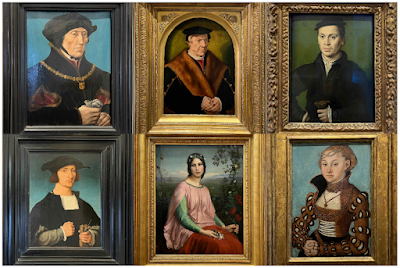We recently went to the Museum of Fine Arts of Lyon (French: Musée des Beaux-Arts de Lyon). In general, can’t give this museum high marks (no pun intended). In general, loved the city of Lyon but the museums were okay, not great. We love museums and were looking forward to some great museum time in Lyon but that didn’t happen.
In the Museum of Fine Arts, the curation and layout of the pieces was too academic and not approachable. Explanations were mostly all in French. At first, they said we could use our phone to attach to museum’s free Wi-Fi and get our audio guides online with a QR code. Great! Unfortunately, neither the Wi-Fi nor the QR code worked. So, after 30 minutes of wasted time, we broke down and got the guide. It helped.
Then, to top it off, we had a bad experience at the museum café for lunch. We said we were there to eat, and they said fine. We waited 15 minutes before they came around to take our order. At that time, they said the kitchen was already closed. I blew a gasket, and we walked out. I wasn’t demonstrating much “sprezzatura” you can say, translated roughly as “a certain nonchalance which conceals all artistry and makes whatever one says or does seem uncontrived and effortless.”
We’ve talked about sprezzatura in the past in the posts:
- Sprezzatura – 50 Ways Italian Genius Shaped the World
- Baby, You’ve Got Some Sprezzatura – Renaissance Portraits
- Child Sprezzatura
Anonymous - Portrait of Guillaume de Montmorency (1520)
Attributed to Bartholomäeus Bruyn Le Viex - Portrait of a Man (1555)
Corneille de Lyon - Man with a Black Beret Holding a Pair of Gloves (1575)
Joos Van Cleve - Portrait of a Man (1520)
Louis Janmot - Flowers of the Field (1845)
Lucas Cranach l'Ancien - Portrait of a Saxon Lady (1534)
Five of the six paintings are of that Renaissance style - period, 1500s. The one painting outside the date range is the Louis Janmot painting "Flowers of the Field" (1845). But it seems like it fits in as the woman is wearing a vaguely Renaissance dress and expression.

.jpg)
.jpg)
.jpg)
.jpg)
.jpg)
.jpg)
No comments:
Post a Comment
All comments are moderated. If your comment doesn't appear right away, it was likely accepted. Check back in a day if you asked a question.